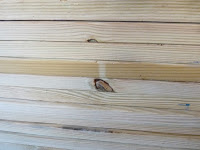In the preceding blog the first
definition of industry given in Merriam-Webster had been “the habit of working
hard and steadily.” The second definition of industry in the same resource is “a
group of businesses that provide a particular product or service.” The early
industries in Pennsylvania fit this category. As towns sprang up, Read More
the need for lumber and flour increased, prompting people to seek to fill those necessities. Another early kind of mill supplied paper.
Sawmills
 Men also saw the necessity for
grist mills, businesses that specialized in grinding grain into flour. An
individual processing flour by hand used tedious and continual hand motion.
Settlers preferred taking their grain to a grist mill and would travel a great
distance to have their grain ground. They called the man who ran the grist
mill, a miller.
Men also saw the necessity for
grist mills, businesses that specialized in grinding grain into flour. An
individual processing flour by hand used tedious and continual hand motion.
Settlers preferred taking their grain to a grist mill and would travel a great
distance to have their grain ground. They called the man who ran the grist
mill, a miller.
the need for lumber and flour increased, prompting people to seek to fill those necessities. Another early kind of mill supplied paper.
Sawmills
Because of the many needs for wood,
individuals started businesses for buying and selling wood and wood products.
Men built a water-powered sawmill as one of the first commercial buildings in a
new town. Swedish settlers built the first one in the southeast of what is now
Pennsylvania in 1662. A huge waterwheel located outside the building in a fast
moving stream of water connected to a series of gears that made the saw move.
One man with a young helper in a saw mill could cut 200 boards from pine wood
in one day, 188 more boards than two men could cut with a two-hand saw in a
day.
Gristmills
 Men also saw the necessity for
grist mills, businesses that specialized in grinding grain into flour. An
individual processing flour by hand used tedious and continual hand motion.
Settlers preferred taking their grain to a grist mill and would travel a great
distance to have their grain ground. They called the man who ran the grist
mill, a miller.
Men also saw the necessity for
grist mills, businesses that specialized in grinding grain into flour. An
individual processing flour by hand used tedious and continual hand motion.
Settlers preferred taking their grain to a grist mill and would travel a great
distance to have their grain ground. They called the man who ran the grist
mill, a miller.
Like saw mills, early grist mills
used mostly water power, with supplemental wind mills in the winter when the
water froze. The water flowing over a large wheel turned it, and that motion
turned smaller gears that put a grinding wheel into motion. The grinding wheel
applied enough pressure on the grain to crush it. Besides grinding the grain,
the miller sold flour he obtained as payment for grinding or bought from a
farmer who had extra.
Those who built a grist mill had to
have knowledge of many different skills. No colleges existed at the time to
teach the trade of grist mill building. Sometimes men learned through
apprenticeship. Reading a book helped others. One book called The Young Mill-Wright & Miller’s Guide
printed in 1795 explained the skills. This book says that the builder needed to
know “basic concepts of engineering, hydraulics, surveying, arithmetic, and
business management.”[1] It provided guides for finding the best spot
for a mill, how to make the water go to where you needed it, making the
mechanical parts of a mill, and business advice about working with employees,
suppliers, and transporters.
An early mill
founded in 1690 made paper. Only the town of Germantown in Philadelphia County
had a mill of this kind. In fact, no other paper mills operated anywhere else
in America for twenty more years.
To build
this paper mill, William Rittenhouse received financial backing from two men
plus the printer, William Bradford, who was a leader later during the
Revolutionary War. They set up the mill beside the Wissahickon Creek. No description of the way Mr. Rittenhouse
made paper has been found.
The early
pioneers had to be very creative, intelligent, and inventive to be able to
build saw mills, grist mills, and even a paper mill during the beginning years
of Pennsylvania.
[1]
Shaw
Resources:
Miller, Arthur, Jr. and Marjorie L. Miller. Guide to the Homes of Famous Pennsylvanians. Mechanicsburg, Penn: Stackpole Books, 2003.
PA Dept. of Education. “Significant Milestones in Pennsylvania Forest History,” 2000. http://www.hlma.org/pennswoods/overview/HLMA_milestones.pdf
Pennsylvania State University. “Colonial America's Pre-Industrial Age of Wood and Water.” http://www.engr.psu.edu/mtah/articles/pdf/colonial_wood_water.pdf
“Sawpit.” Wikipedia. https://en.wikipedia.org/wiki/Saw_pit


This is a question about your workbooks. Are they for a particular age or can they be used by all ages?
ReplyDeleteI designed them for 4th to 8th grade. They could be read aloud to younger children, and I know that they have been used by older students. Also, even adults seem to enjoy them. Individuals in my critique group and from my church have commented that they enjoyed reading them.
DeleteThank you.
ReplyDelete